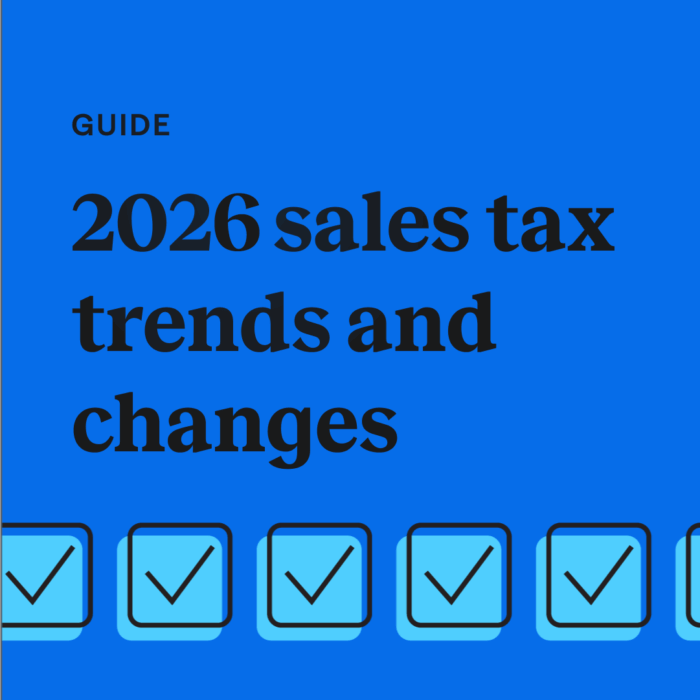Omnichannel retail and sales tax
by September 25, 2024
Imagine you’re new to the world of long-distance cycling so you’re in the early stages of researching and eventually purchasing comfortable riding gear. To start, you grab your laptop to search online for “biking apparel” and your search results lead you to ‘Jan’s Bikes and Apparel’ and ‘Pam’s Bikes and Apparel’. You’re not sure which to go with so you grab your smartphone and search the hashtag #bikingapparel on Instagram for ideas. You see tons of bike riders sporting great gear from Jan’s and as you scroll down your, feed you notice an advertisement from ‘Jan’s Bikes and Apparel’ that promotes a new line of reflective shorts and tops.
From there you’ve decided that you’ve seen all you need to see.
You click the “buy now” button from the post which leads you to the product page on Jan’s site. As soon as you get there you’re served a nice 15% discount code since you came in from Instagram. Feeling really excited about getting started, you add both items to your shopping cart and hit buy. Because of an ordering backlog, the items will take two-weeks to ship, which would hamper your weekend plans with your new biking buddies. You call Jan’s Bikes and Apparel for help where the rep informs you about next day in-person pickup. Happy with that resolution, you decide to pick up the items from the store tomorrow afternoon.
Sound familiar? Welcome to omnichannel retail.
What is omnichannel retail?
Omnichannel retail integrates the many touchpoints in between online and offline shopping. It means a customer can buy products from multiple online channels. This creates a brand-immersive, and often personalized way for shoppers to engage with your brand and eventually purchase products. Whether it’s a biking gear or a new pair of running shoes, omnichannel retail creates an integrated, multi-touch shopping experience for your customers.
How is this any different than multi-channel retail? The main difference is the tight integration between device types and on and offline touchpoints. With multi-channel retail, a shopper could have had exposure to the same exact channels, however, each channel works independently from the other. This creates a disjointed, less than immersive shopping experience that inefficiently takes consumers down the path to purchase. With an omnichannel, personalized shopping experience, a retailer sharpens its competitive edge and drives customer loyalty and retention rates through each touchpoint.
Common challenges of omnichannel retail:
Omnichannel retail sounds perfect, right? Customers are immersed in a brand experience when and how they want, in a seamless way. Companies drive retention and capitalize on the opportunity to meet the varying needs of their customers no matter where they are in their journey. If it’s so great, why is it such a challenge to implement and why don’t most companies capitalize off of it?
Finding the right channels and integrating them.
First, there’s this misconception that an omnichannel strategy means you need to be everywhere. Although at the core of omnichannel is your ability to leverage multiple touchpoints, omnichannel requires intense focus on the overall experience and channels that your customers and prospects frequent. Many companies deploy a “spray and pray” model without taking a step back and ensuring the channels and resources they’re investing in are what their customers and prospects use. For example, you may not need a mobile app if most of your customers discover, purchase, and prefer getting your products directly through your mobile-responsive website.
To help, companies should focus on their existing data and their ability to segment customers and prospects. As a starting point, some data sources that companies should consider are browsing behaviors, responses to marketing programs, social media activity, direct customer feedback, CRM data, and website traffic.
Producing the right content and consistent experience at each touchpoint.
As more and more companies replicate “best in class” experiences, they’re faced with elevated customer expectations. Yesterday’s innovation is today’s norm, so it’s crucial for retailers to constantly innovate and seek blue ocean strategies where possible. One way is through capitalizing on the right content at each customer touchpoint.
For instance, ensuring that your social channels, mobile app, and website are consistent when it comes to messaging and content mix as buyers move closer to purchase. Content establishes credibility and trust in your company’s ability to solve a pain point. Good content progresses or accelerates the buyer’s decision, however, it must be timed appropriately and made accessible through the right channels.
Also, with many retail options to choose from, retail consumers are in a position of power – a great way to differentiate is to personalize and integrate the omnichannel experience. For instance, Rick’s mask may be identical to (in theory) the mask Jake’s sporting goods sells, however, Rick’s produces blog posts, a clear product description, social media posts, and it has an app to educate consumers about masks. Rick’s also adjusts messaging in their email campaigns and paid social media ads based on the behaviors of certain buyers and they make it easy to purchase the mask through social platforms, their app, and website. Each touchpoint has a consistent brand experience that seems to know the potential buyer and buyers can purchase the mask in different ways. Jake’s does a good job of promoting the mask on social and through their blog, but the experiences are disjointed and you can only purchase through their website. The difference between the two is how immersed a customer with Rick’s is versus the fragmented experience presented by Jake’s.
Establishing and maintaining cross-channel consistency.
Another challenge involves inconsistencies between channels. For instance, if a consumer clicks into the ad promoting the running mask on Instagram to purchase the mask but the ad routes to a running shoe product page that’s clearly a poor user experience. Also, what if after searching Rick’s eCommerce site they find out that the desired product is out of stock but it’s still being advertised in their Instagram feed?
The fix for this requires better gathering, analyzing, and sharing data across necessary teams, where data can come from many sources such as your CRM systems, inventory tracking software, or online store. For example, the marketing team should be made aware of inventory shortcomings in order to update the site and social posts. in a timely manner. Ensuring all internal stakeholders are aware of inventory shortcomings in this example would help the sales team know how much they can sell, the marketing team how much and how long they can promote the product, and the support team will be ready to answer questions around when the product will be available again.
By no means is omnichannel easy. It requires careful coordination of internal and external stakeholders, it means tearing down silos as teams gather and share data, and it means taking a step back and looking at the whole customer experience instead of just going channel by channel. What good is a great social media presence if your audience is sent to a broken eCommerce site experience that makes purchasing difficult? The key is to make the process leading to purchase simple and integrated – but more importantly, make it easy.
What does omnichannel mean for sales tax compliance?
Simply, the more opportunities or channels your company makes available for consumers to purchase across states, the more exposure you have to sales tax laws in each state. Properly tracking transactions as you proliferate and integrate more channels is critical when it comes to monitoring your economic nexus obligations.
Following the Supreme Court ruling in the South Dakota v. Wayfair case, a company does not need a physical presence (e.g. location or employees) in a state to constitute nexus, it can also trigger sales tax nexus with an “economic” presence in a state. Economic nexus may be triggered if a state’s economic threshold for total revenue or number of transactions is breached -— if so, the company will need to collect and remit sales tax on behalf of the state.
As more and more retail companies activate more online and hybrid channels to better reach their customers amidst the pandemic, they’re potentially and unknowingly exposing themselves to nexus laws of multiple states. For some with lighter online transaction volume or revenue, this business model shift can be tracked through spreadsheets and paid out to states manually. For many companies, who’ve seen their percentage of online transactions grow significantly across states – either all online or a mix of online and offline – the road ahead isn’t so simple.
Ready to automate sales tax? Sign up for a free trial of TaxJar today.








